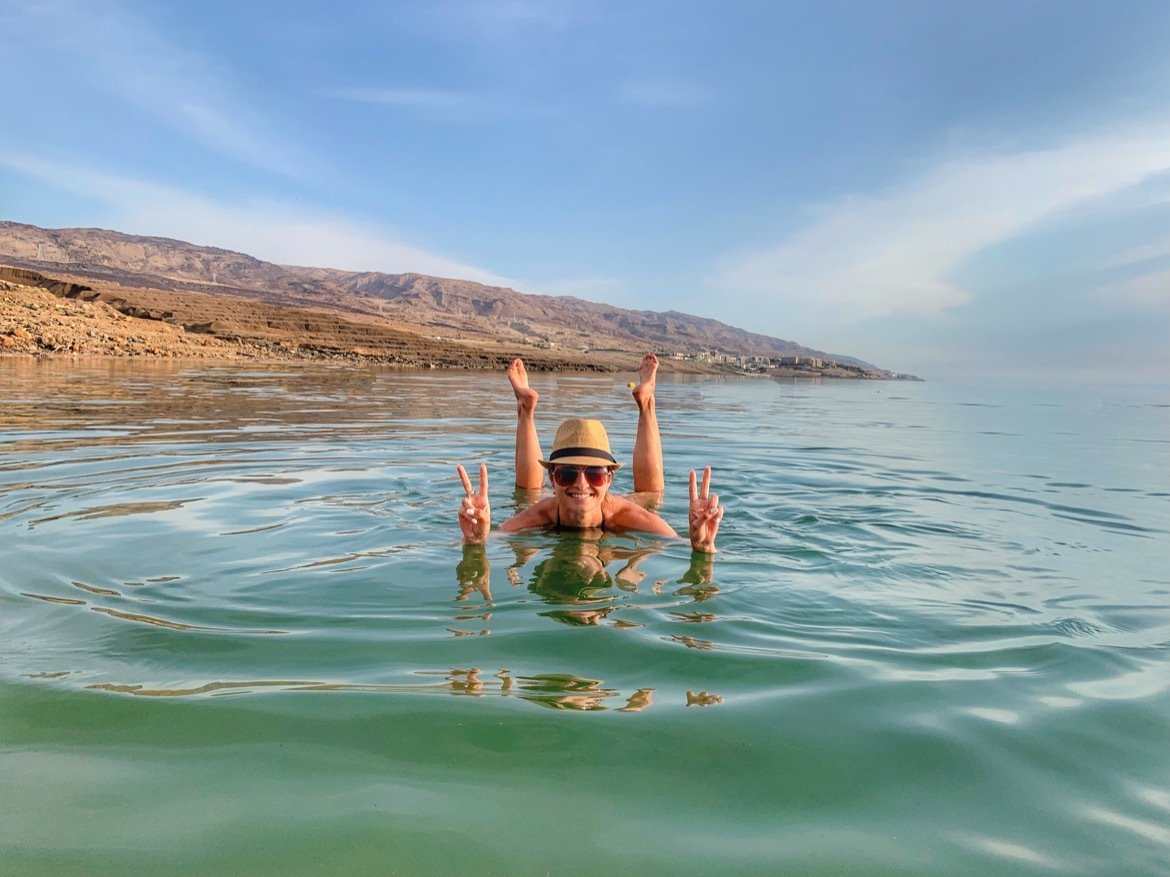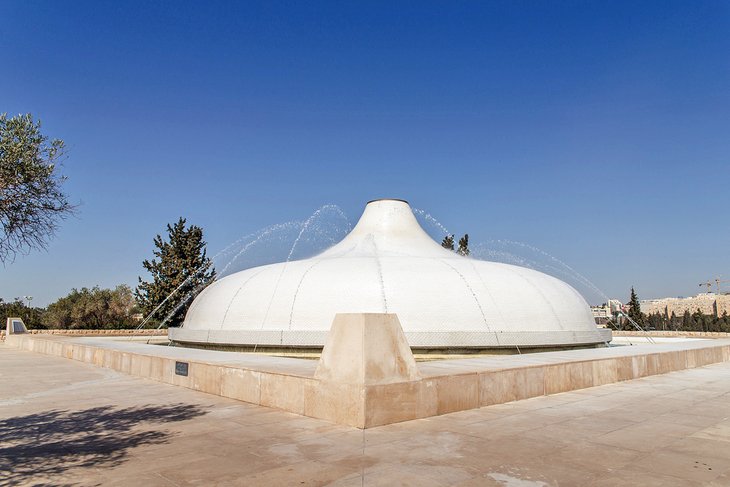The Best Things to Do in Jerusalem: A Complete Guide

I. Visit the Western Wall
History and Significance of the Western Wall
Also known as the Wailing Wall or the Kotel, the Western Wall is a sacred site in Jerusalem and one of the Jewish people's most important religious sites. The wall is believed to be a remnant of the Second Temple, which was destroyed by the Romans in 70 CE. It is considered the closest accessible site to where the Holy of Holies, the Temple's inner sanctum, once stood. For centuries, Jewish people worldwide have flocked to the Western Wall to pray and leave notes with their prayers in the wall's crevices.
The Western Wall holds immense historical and religious significance and is a must-visit for anyone travelling to Jerusalem. It serves as a symbol of the Jewish connection to the land of Israel and is a powerful testament to the resilience and faith of the Jewish people.
Tips for visiting the Western Wall
If you plan to visit the Western Wall, here are some tips to enhance your experience:
-
Modest attire: Dress modestly out of respect for the site's sacredness. Both men and women should cover their shoulders and avoid wearing shorts.
-
Head covering: Men must wear a head covering when approaching the Western Wall. Kippahs are available at the entrance for those who do not have one.
-
Separate prayer areas: The Western Wall has a separate prayer area for men and women. Make sure to enter the appropriate section based on your gender.
-
Respectful behaviour: The Western Wall is a place of worship, so maintain a respectful demeanour. Avoid loud conversations, taking photos, or engaging in activities that may disrupt others' prayers.
-
Leave a note: Consider writing a personal prayer or wish on a piece of paper and placing it in the wall's cracks. It is believed that your prayers will reach God through this act.
Visiting the Western Wall is an incredibly moving and spiritual experience. It is a chance to connect with history, witness the devotion of others, and feel the weight of centuries of prayers. Don't miss the opportunity to visit this significant site when exploring Jerusalem.

II. Explore the Old City
Jerusalem's Old City is a UNESCO World Heritage site and is home to some of the world's most iconic religious and historical sites. Here are some of the best things to do and see when exploring the Old City:
Highlights of the Old City
- Church of the Holy Sepulchre: This church is one of the most sacred Christian sites in the world and is believed to be where Jesus was crucified, buried, and resurrected.
- Dome of the Rock: Located on the Temple Mount, the Dome of the Rock is an architectural masterpiece and an important site for Muslims. It is believed to be where the Prophet Mohammed ascended to heaven.
- Tower of David: The Tower of David is a medieval citadel that offers panoramic views of the Old City and houses a museum telling Jerusalem's history story.
Recommended walking routes
Exploring the Old City is best done on foot, and several walking routes will take you to the most important sites and allow you to soak in the atmosphere of this historic place. Here are some recommended routes:
1. The Via Dolorosa Route: This route follows the path believed to be taken by Jesus on his way to the crucifixion. It starts at the Lion's Gate and ends at the Church of the Holy Sepulchre, passing through 14 stations of the cross along the way.
2. The Jewish Quarter Route: This route takes you through the Jewish Quarter, where you can explore ancient synagogues, visit the Western Wall, and walk along the Cardo, a reconstructed Roman-era street.
3. The Mount Zion Route: This route takes you to the Mount Zion area, where you can visit the Room of the Last Supper, the Church of the Dormition, and the Tomb of David.
4. The Temple Mount Route: This route allows you to explore the Temple Mount and visit the Dome of the Rock and the Al-Aqsa Mosque. Note that access to the Temple Mount may be subject to restrictions and security measures.
Exploring the Old City is an unforgettable experience that will take you back in time and allow you to immerse yourself in Jerusalem's rich history and religious significance.
For more information about Jerusalem's Old City, you can visit this Wikipedia article.

III. Tour the Yad Vashem Holocaust Memorial
The Yad Vashem Holocaust Memorial is an essential stop for anyone visiting Jerusalem. This museum and memorial complex is dedicated to preserving the memory of the six million Jews who perished in the Holocaust. It serves as a reminder of the atrocities committed during World War II and the need to prevent such horrors from happening again.
Information about the museum and its exhibits
The Yad Vashem Holocaust Memorial is an extensive complex that includes several different areas and exhibits. Here are some key highlights:
1. Museum: The museum tells the story of the Holocaust, from the rise of Nazism to the liberation of the concentration camps. It features a chronological narrative with photographs, personal testimonies, artefacts, and interactive displays that comprehensively understand this dark historical period.
2. Hall of Remembrance: The Hall of Remembrance is a solemn space where visitors can pay their respects to the victims of the Holocaust. It features an eternal flame and a stone crypt containing the ashes of Holocaust victims.
3. Children's Memorial: The Children's Memorial is a powerful tribute to the 1.5 million Jewish children who perished in the Holocaust. It consists of a dark, underground chamber with mirrors and candles that create a haunting effect, symbolizing the lost lives of the children.
4. Garden of the Righteous Among the Nations: This garden honours non-Jews who risked their lives to save Jews during the Holocaust. It features plaques with the names of these brave individuals and serves as a reminder of the importance of compassion and humanity in the face of evil.
Importance of visiting and paying respects
Visiting the Yad Vashem Holocaust Memorial is not only important for understanding the tragic history of the Holocaust but also for honouring the memory of the victims and ensuring that their stories are never forgotten. Here are some reasons why it is important to visit and pay respects:
1. Remembrance: By visiting Yad Vashem, we acknowledge the suffering and loss endured by millions of Jews during the Holocaust. It is a way to honour their memory and ensure their stories are told for generations.
2. Education: The museum provides a comprehensive educational experience that helps us understand the historical context of the Holocaust, the human atrocities committed, and the importance of standing up against hatred and discrimination.
3. Reflection and empathy: Visiting Yad Vashem allows us to reflect on the horrors of the Holocaust and cultivate empathy for the victims and survivors. It reminds us of the importance of promoting tolerance, inclusivity, and respect for all people.
4. Commitment to the future: By visiting Yad Vashem, we commit ourselves to preventing such atrocities from happening again. It serves as a call to action to stand up against genocide, discrimination, and hatred.
It is essential to approach the Yad Vashem Holocaust Memorial with respect, sensitivity, and a willingness to learn. The memorial is a powerful reminder of the past and a beacon of hope for a more inclusive and compassionate future.

IV. Experience the Dead Sea
No visit to Jerusalem is complete without experiencing the mystical and unique beauty of the Dead Sea. Located about an hour's drive from the city, the Dead Sea is a must-visit destination for its therapeutic properties and remarkable natural wonders. Here are some of the highlights of visiting the Dead Sea:
Benefits of floating in the Dead Sea
1. Natural mineral-rich water: The Dead Sea is known for its high salt and mineral content, including magnesium, calcium, and potassium. These minerals are believed to have various health benefits, including improving skin conditions like psoriasis and eczema.
2. Floating sensation: With a salt concentration significantly higher than the ocean, the buoyancy of the Dead Sea is remarkable. Visitors can effortlessly float on the water's surface, a unique and enjoyable experience.
3. Mud therapy: The Dead Sea's mud is rich in minerals and has been used for therapeutic purposes for centuries. Many visitors enjoy applying the mud on their bodies and letting it dry before rinsing it off. It is believed to exfoliate and rejuvenate the skin.
4. Relaxation and stress relief: The serene surroundings, the calm waters, and the therapeutic properties of the Dead Sea combine to create a relaxing and stress-relieving atmosphere. It's the perfect place to unwind and rejuvenate.
Tips for visiting and enjoying the Dead Sea
1. Protect your eyes: The water's high salt content can cause discomfort and irritation if it gets into your eyes. It is recommended to wear goggles or keep your eyes closed while floating.
2. Avoid shaving before visiting: The saltwater can cause a stinging sensation on freshly shaved or cut skin. It's best to avoid shaving a day or two before you visit the Dead Sea.
3. Stay hydrated: The hot climate and the water's high salt content can dehydrate you quickly. Drinking plenty of water and avoiding prolonged exposure to the sun is essential.
4. Protect your valuables: The small salt crystals in the water can damage electronics and jewellery. It's best to leave your valuables in a safe place or use waterproof pouches for protection.
5. Rinse off after floating: While the minerals in the water are beneficial, the salt can leave a residue on your skin. It is recommended to rinse off with fresh water after floating to avoid dryness.
6. Enjoy a spa treatment: Many resorts and spas in the Dead Sea area offer a range of spa treatments and massages. Indulge in a luxurious treatment to enhance your relaxation and experience the full benefits of the Dead Sea.
Visiting the Dead Sea is an unforgettable experience that combines natural beauty, relaxation, and wellness. Take the time to immerse yourself in the extraordinary wonders of this unique destination in Jerusalem.

V. Discover the Israel Museum
One attraction that should not be missed when visiting Jerusalem is the Israel Museum. This world-class museum offers a comprehensive collection of art and artefacts that tell the story of the land and people of Israel throughout history. Here are some notable artworks and artefacts that you can discover at the Israel Museum:
Notable artworks and artefacts in the Israel Museum
-
The Dead Sea Scrolls: The museum is home to one of the most significant archaeological discoveries of the 20th century. The Dead Sea Scrolls, a collection of ancient Jewish texts, provide insights into the religious and historical traditions of the region.
-
The Model of Jerusalem: This 1:50 scale model provides a detailed and accurate representation of Jerusalem during the Second Temple period. It offers visitors a unique perspective on the city's rich history and architectural heritage.
-
The Shrine of the Book: This iconic building houses the Dead Sea Scrolls and other ancient manuscripts. Its unique design, inspired by the shape of the clay jars in which the scrolls were found, creates a powerful and contemplative atmosphere.
-
The Jewish Art and Life Wing: This museum section showcases Jewish communities' rich artistic and cultural traditions worldwide. From ceremonial objects to traditional costumes, this exhibit offers a glimpse into the diverse heritage of the Jewish people.
Must-see exhibits
-
The Archaeology Wing: This exhibit presents archaeological finds from prehistoric times to the Ottoman period. Here, visitors can explore the ancient history of Jerusalem and the surrounding region through a wide range of artefacts.
-
The Fine Arts Wing: This museum section houses a collection of European art from the Middle Ages to the present day. It features works by renowned artists such as Rembrandt, Monet, Picasso, and Chagall.
-
The Billy Rose Art Garden: This outdoor sculpture garden provides a tranquil space to appreciate contemporary sculpture by artists worldwide. It offers a peaceful retreat amidst the hustle and bustle of the museum.
-
The Youth Wing: Designed for younger visitors, this interactive exhibit offers hands-on activities and educational programs. It aims to engage children and inspire their curiosity about art and history.
The Israel Museum is a treasure trove of art and history, offering a fascinating journey through the cultural heritage of Israel and the world. Whether you are an art enthusiast or a history lover, visiting this museum is a must for anyone exploring Jerusalem.
